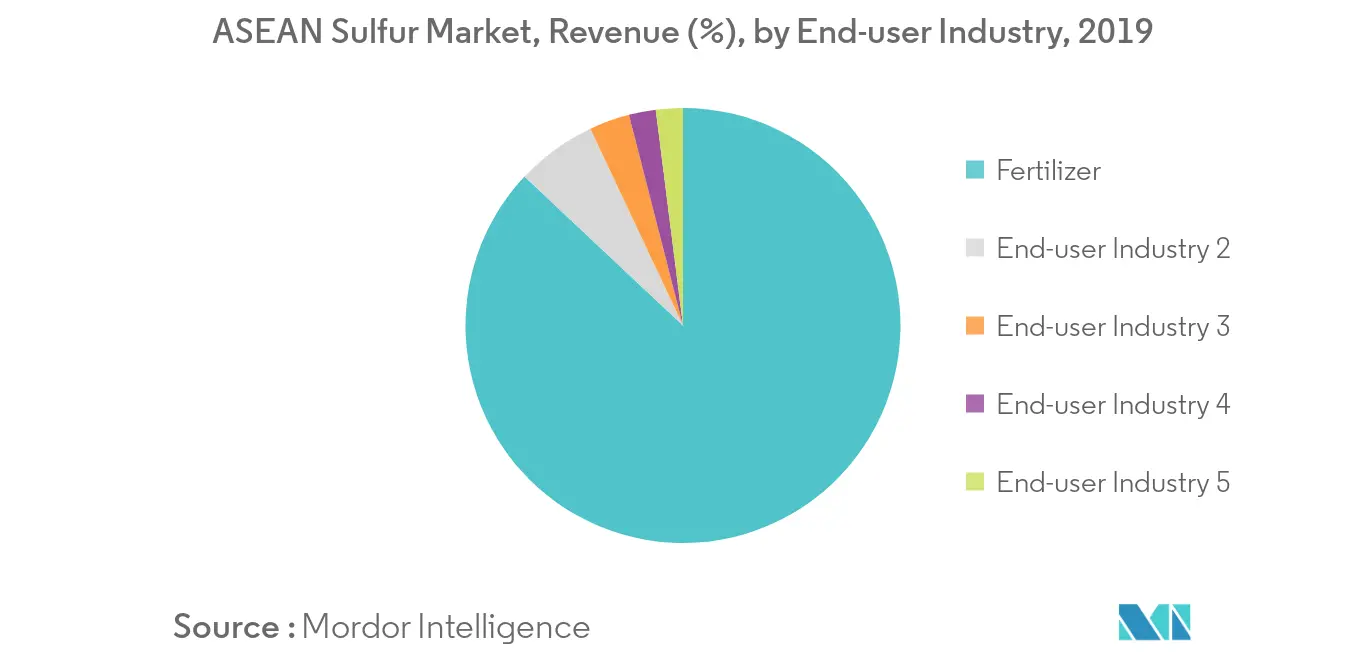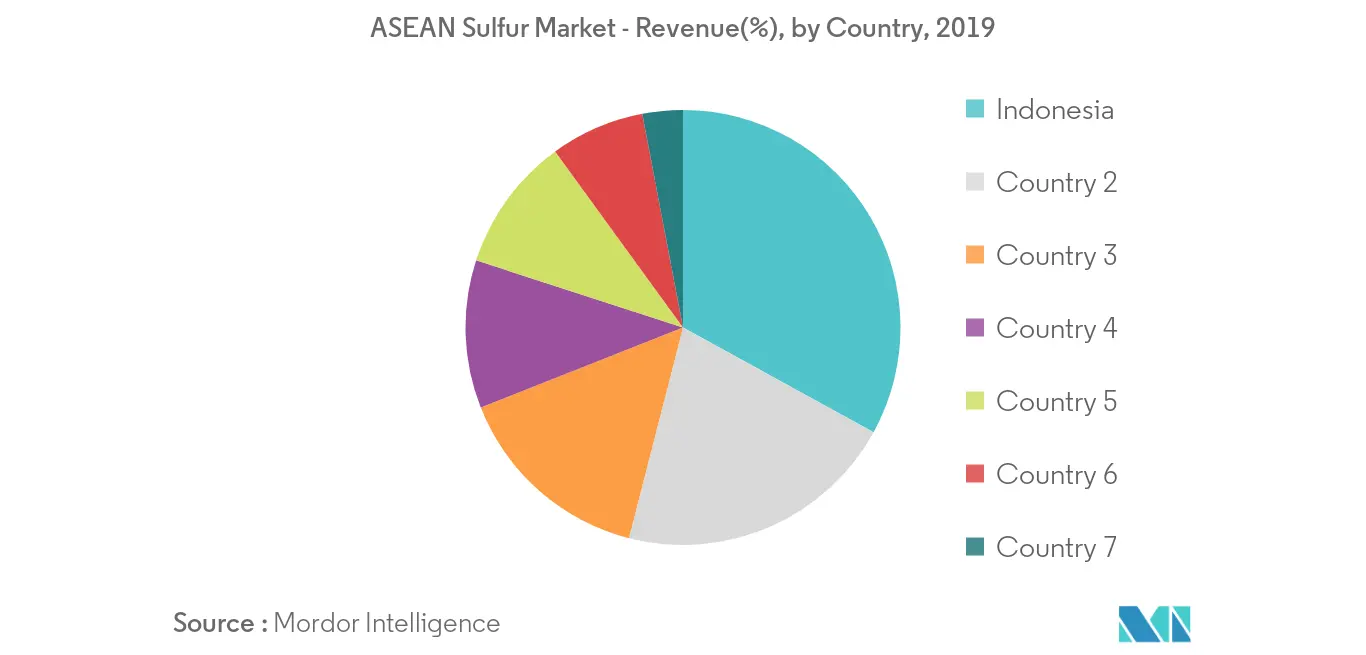Market Trends of ASEAN Sulfur Industry
This section covers the major market trends shaping the ASEAN Sulfur Market according to our research experts:
Growing Demand from Fertilizer Industry
- Sulfur is considered as a fourth macronutrient along with nitrogen, phosphorus, and potassium in agriculture industry.
- Sulfur has various functions in plants. Some of these major roles are synthesis of proteins and chlorophyll formation. It is also essential in the synthesis of oils, especially in oil crops, and is an active component in the metabolism of nitrogen.
- Oil palm, rubber, and sugarcane account for almost 95% of the ASEAN fertilizers demand. Plantations are expected to be the main driver for the fertilizer demand increase in the next few years, and, in turn, this may drive the global sulfur market for fertilizer use.
- Additionally, due to emission controls in the past ten years, sulfur deposition has dropped below the requirement for many crops, widespread sulfur deficiencies resulted in the development of a wide range of sulfur-containing crop and pasture fertilizers.
- The increase in oilseed rape production, used for biofuels, has resulted in an increased demand for sulfur fertilizers, which is used to counter the risk of sulfur deficiency.
- Strong market for soybean, corn, and sugarcane, which are used for biofuel production, have resulted in increased demand for sulfate fertilizers, such as, ammonium thiosulphates.
- Indonesia GDP from agriculture increased from USD 3.21 billion in the fourth quarter of 2019 to USD 5.05 billion in first quarter of 2020. Also, Indonesian fertilizers market is expected to grow at a CAGR of 4% during the forecast period. These factors are expected to positively impact the sulfur market in the country.
- Hence, the above-mentioned factors are ikely to affect the demand for sulfur in ASEAN region during the forecast period.

Indonesia to Dominate the Market
- Indonesia is the largest economy in Southeast Asia. The country has witnessed a GDP growth rate of 5% in 2019 and is expected to witness a GDP growth rate of 5.1% in 2020.
- Indonesia is one of the top importers of sulfur among ASEAN countries, as well as at the global level. The sulfur market demand in Indonesia is expected to reach approximately 834 thousand metric tons by 2025.
- Chemicals and food and beverages, along with textiles, automotive, and electronics industries, were declared as the priority industries by the government. This is primarily to increase their contribution to the country's GDP, by up to 21-26% by 2030.
- Indonesia is the major producer of a myriad of agricultural products. GDP from agriculture averaged USD 4.92 billion from 2010 until 2018. Investments are utilized to increase the use of mechanized and automatic agricultural technology, use of fertilizers and agrochemicals to expand the total farming areas, and improving infrastructure. Thus, products relevant to agriculture pose great opportunities for businesses in Indonesia.
- The food and beverage industry is projected to remain the mainstay of supporting Indonesia's manufacturing and economic growth. The important role of the food and beverage industry can be seen from the large contribution to the country's non-oil and gas GDP.
- Indonesia is one of the fastest growing pharmaceutical markets in Asia. Indonesia's pharmaceutical market is ranked as the largest market in the ASEAN regions, with the market value expected to hit USD 10.11 billion by 2021.
- Indonesia is the second-largest producer of natural rubber in the world. Domestically, it is an essential commodity after crude palm oil, coffee, and cocoa, and plays a very crucial role in contributing to the state income, foreign exchange income, and providers of critical industrial raw materials. Hence, this industry is another major consumer of sulfur, which is used in the vulcanization of rubber.
- Hence, the aforementioned factors are likely to positively impact the demand of sulfur during the forecast period.


